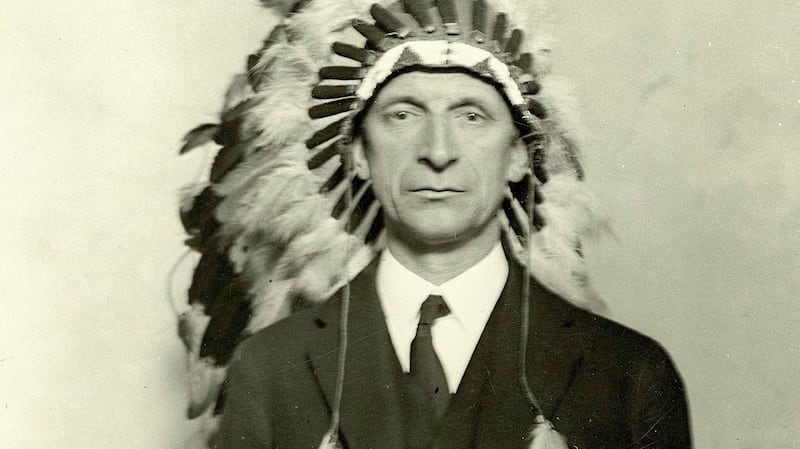Long before the main event, chief John Kenlon of the New York Fire Department ordered the doors of Madison Square Garden to be locked. Anybody not inside by then was out of luck.
The building was already heaving in a way it hadn’t since Jess Willard defeated Frank Moran three years earlier in the sort of heavyweight title bout that made the place world-famous. The official capacity was 12,000 but there were far more than that shoehorned in on this particular evening, and maybe half as many again milling outside in the vain hope of eavesdropping the action.
Kenlon knew what the fuss was about. He grew up in Annagassan, Co Louth and though he went to sea as a deckhand on a topsail schooner at 13, he brought with him enough of the troubled history of his homeland.

Excited hordes of his compatriots were cluttering the streets of midtown since early evening, not to cheer a boxer, but to witness a speech by Éamon de Valera. One month after stealing into New York as a stowaway on the SS Lapland on June 11, 1919, carrying the title of priomh-aire of the First Dáil, he was now headlining the Garden as the president of Ireland.
That job description didn’t actually exist and the country had no official status either but those were only a matter of semantics. On the 100th anniversary of his trip, it’s worth remembering that over the course of the next 18 months, de Valera played more of the most storied venues in American sport than perhaps any Irishman ever.
Decades before Eamon Coghlan and U2 rocked MSG in different ways, de Valera nearly took the roof off an earlier iteration of the building. The very act of him taking the mic that night prompted a 15-minute ovation by a crowd already stoked by a series of anti-British warm-up acts that included Father Francis Duffy, chaplain of the 165th Infantry in France.
De Valera had prepped for his Broadway debut by packing out Fenway Park in Boston two weeks earlier. At a time when the city’s beloved Red Sox used to draw an average of 6,000 for home games, nearly ten times that number turned up for him on a Sunday afternoon.
As three mounted policemen cleared a path so the guest of honour could walk from the outfield to the stage erected over first base, the crowd surged forward, desperate just to touch the hem of his garment. Women fainted in the crush and several appeals were made to try to calm the hysterical multitude. Not even Babe Ruth, who’d started his pro career in that very stadium, ever wreaked such havoc there.
It was a similar story on his visit to the Chicago Cubs’ baseball stadium, the ivy-clad monument today known as Wrigley Field. He drew 25,000, way more than the Cubs, and local newspapers reported men and women weeping with joy as he spoke.
Throughout his soliloquy he had to stop to allow bouts of impromptu, sustained cheering to die down. The British Consulate’s man in the crowd sent a hurried dispatch to London [de Valera having escaped from Lincoln Jail just five months previously]), describing the event as a very impressive display of humanity and estimating the ovation that the missing prisoner received lasted for 30 minutes.
Polo Grounds
In a previous life, de Valera once converted a penalty for Rockwell College in a Munster Cup match at Turner’s Cross in Cork but there’s no evidence that he appreciated how his mission to raise awareness of and money for the First Dáil was bringing him onto so much hallowed sporting ground across America.
He couldn’t have known his visit to the University of Notre Dame in October of that year would be regarded as pivotal in the college’s gridiron team from then on being known exclusively as “The Fightin’ Irish”.
The extent of his own recreation during this sojourn appears to have been handball. Billeted at the Waldorf-Astoria for the duration, himself and Harry Boland, his trusted lieutenant, used to nip out of the most luxurious hotel in Manhattan and head around the corner to play in a nearby court.
On October 31st, 1920, 40,000 people filed into the Polo Grounds, then the city’s largest open-air stadium and home to the New York Yankees. They came at very short notice to hear de Valera commemorate the death of Terence MacSwiney on hunger strike in Brixton Prison.
An estimated 10,000 more were stranded outside as the diaspora gathered to mourn his passing, carrying tricolours and a collective wish to pay tribute to his sacrifice. They were joined in this by many of other nationalities who had simply been touched by the human story over the 74 days during which he had refused food.
If it was far from the 80,000 who witnessed Jack Dempsey-Luis Firpo in that ballpark a few years later, the attendance was several thousand more than saw Cavan defeat Kerry in the 1947 All-Ireland final at the same venue.
Historic as that Gaelic football clash became, none of those players quite received the adulation afforded de Valera. Just after he rose to make his address, three turbaned Hindus raced across the green sward, waving a tricolour and the flag of the Indian Independence movement. Upon reaching the platform, they draped both across his bemused shoulders and the crowd went wild. Another home run.















